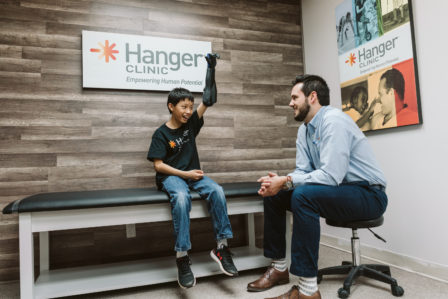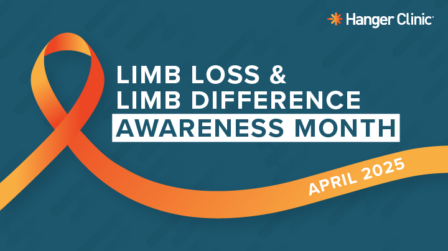The Process: Prosthetics
As you begin your prosthetic journey, there are a few things to keep in mind that will hopefully help make your journey easier to navigate.
Stages of Amputation and Rehabilitation
The process of amputation through rehabilitation can be broken down into stages:
Stage 1: Before Surgery
- If your amputation is scheduled (not an emergency related to trauma), you will have a medical and physical assessment and will receive some education from your surgeon on the procedure.
- Your surgeon might discuss planned pain management, the possibility of phantom pain, and goals for your short and long term future.
- If possible, you should try to meet with a peer visitor (someone who has gone through amputation and can answer your questions based on their own experience.).
- This is also a good time to meet with an experienced, certified prosthetist. Your initial evaluation is free of charge.
Stage 2: Amputation Surgery & Hospital Stay
- You will be admitted to the hospital for surgery, during which your limb will be removed and your wound will be closed.
- Your care team will apply a dressing to your limb to keep it protected and work to control your pain and discomfort.
- There are a variety of dressing options available, from an ace bandage wrap to a removable rigid dressing (RRD), such as an AmpuShield®, or Immediate Post-Operative Prosthesis (IPOP).
- Communicate with your care team to help make sure your pain is controlled. Some people who had a lot of pain prior to surgery note feeling less pain after the surgery.
- Your length of stay in the hospital depends on the nature of the amputation. During your stay, your care team will focus on maintaining or improving the range of motion in the affected limb, promoting wound healing, teaching you functional mobility exercises, and providing ongoing education and support.
- Generally speaking, you may be released from the hospital 3-10 days following surgery. After you’ve gained your strength, balance, and appetite, you may be released home, to a skilled nursing facility, or to a rehabilitation facility.
Stage 3: Pre-Prosthetic Training
- Your care team will focus on preparing your residual limb for a prosthesis. This will involve skin care, muscle strengthening, pain management, and limb shaping.
- You will likely experience swelling in the residual limb, so the use of a shrinker or compression sock to control the swelling should be expected.
- You will be working with your rehabilitative care team and physical therapist to gain strength and avoid contractures (muscle tightening). These exercises can take place in a skilled nursing facility, rehab center, or your home, depending on the care plan established by your care team.
- Part of pre-prosthetic training is desensitizing your residual limb and scar tissue. There are a number of things you can do at home to accomplish this, including massaging the end of your limb in a circular motion.
- This is a good time to meet with your prosthetist to have him/her evaluate your limb. They will ask you a number of questions about your goals, your work, and your hobbies to help identify the most effective components for your prosthesis and establish a prosthetic treatment plan.
- It’s also a good idea to stay in touch with a peer mentor who can answer your questions.
Stage 4: Prosthetic Prescription and Fabrication
- Once your limb is well-healed and much of the initial swelling has gone down, your clinician will begin the process of building your socket. There are a variety of ways to create a socket, and your clinician will share with you how he/she achieves the best fit.
- In many instances, you will initially be fit with a clear diagnostic. This socket is used to allow your prosthetist to make adjustments and modifications before your definitive, or final, prosthesis is created.
Stage 5: Prosthesis Delivery
- When you receive your final prosthesis, your clinician will provide you with a wearing schedule, so you can gradually get accustomed to wearing it.
- You will continue with physical therapy (for lower extremity amputees) or occupational therapy (for upper extremity amputees) with your finished prosthesis to receive additional training.
- During the first year, you will have regular appointments with your prosthetist for modifications and adjustments.
- As time goes on, wearing a prosthesis and integrating into your old patterns will become more routine. It can be challenging at times, but your hard work and dedication will pay off.
- Take advantage of the peer support resources we offer by connecting with a certified peer mentor or attending a local or national event where you can meet and engage with others who are at the same stage as you or further along in their prosthetic journey.
Amputation Rehabilitation Timeline
Download our free rehabilitation timeline, which helps set expectations about the journey ahead.
Resources
Request a Free Evaluation
If you have questions or are ready to talk about prosthetic options, schedule a consultation at a clinic near you.

Latest Updates
Subscribe to stay up-to-date on our latest posts.



